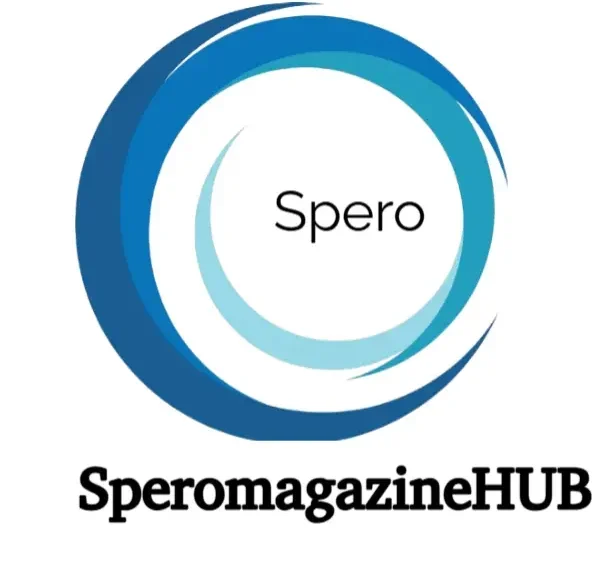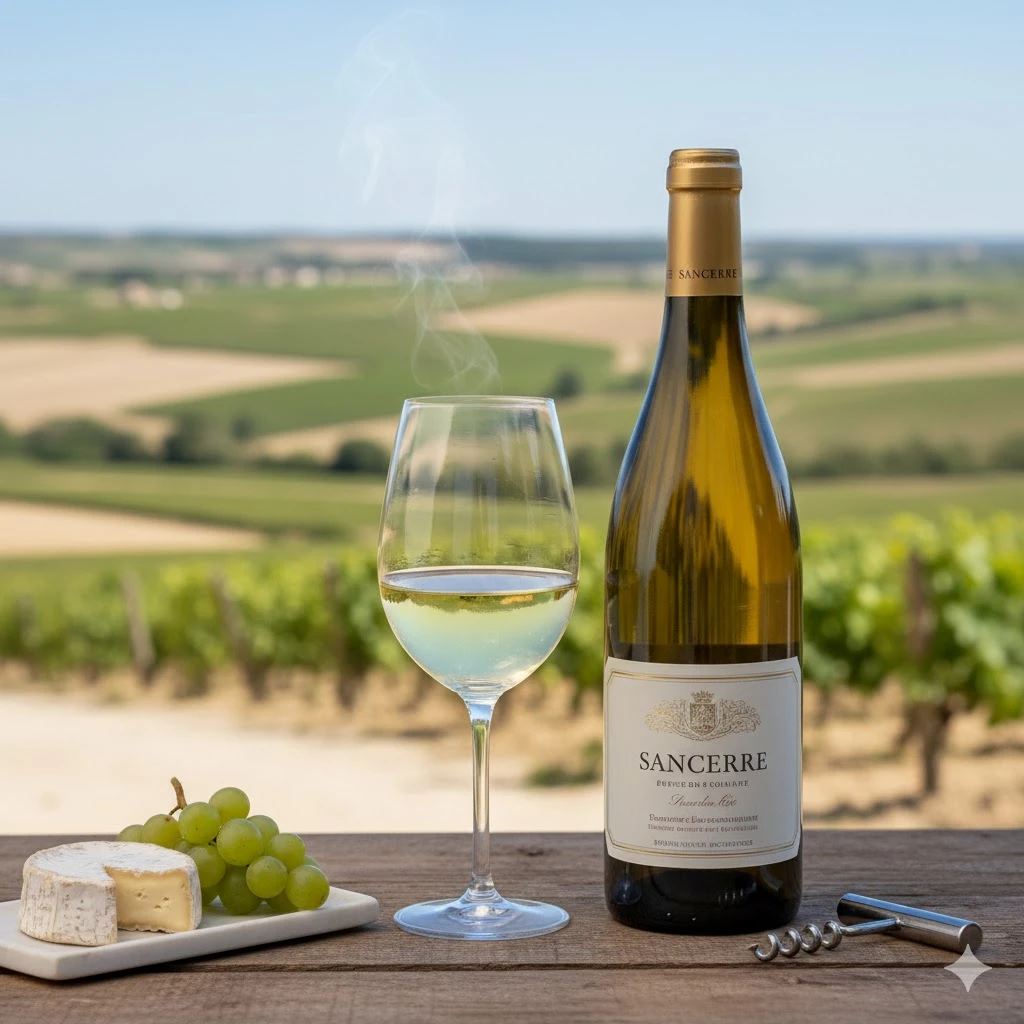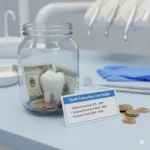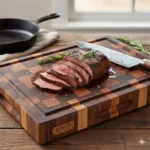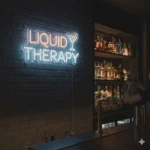Imagine tasting a wine. It feels like biting into a fresh gooseberry. You stand on a chalky, windswept hilltop. That is Sancerre wine. This famous area is in France’s Loire Valley. It commands huge global respect. Why? Because it’s authentic. Sancerre is not just any Sauvignon Blanc. It is the perfect example of its elegance. We’ll show you why this small French area makes such a unique white wine. We’ll look at its geology. Even cover the rare red versions. Tell you exactly how you should pair a bottle of AOC Sancerre. Get ready to feel like a true wine pro. We’re simplifying the secrets of this spectacular Loire Valley wine.
What Makes Sancerre Wine So Distinctive? The Sauvignon Blanc Revolution
When you taste real Sancerre, you know it right away. It has a super focused, almost sharp character. Never tastes like sweet tropical fruit. It tastes like the earth. This unique style happens because the grape and the land fit together perfectly. Forget the fruity Sauvignon Blancs from warm places. The cool climate of the central Loire Valley stops that sugary style. The wine must be refined.
The Signature Grape: Sauvignon Blanc at its Peak
Sancerre is Sauvignon Blanc at its best. It shows amazing balance. The Sancerre wine feels energetic on your tongue. First, you hit a crisp, clean acidity. This acid holds all the flavors in place. Look for notes of gooseberry. Expect vibrant lime zest. Sometimes you even find passionfruit. It always has a savory, herbal flavor too. Think fresh-cut grass. The wine must feel dry and clean. It refreshes your mouth. This makes you want another sip. Growers here don’t just grow grapes. They make sure the grape expresses the land. It captures the essence of the chalky soil. That focus on terroir is why critics love this wine.
The Triad of Terroir: Decoding Sancerre’s Soil Secrets
Want to sound like an expert? Know the soil. Sancerre’s complexity comes from three main soil types. They are like an orchestra. Each type adds a unique note to the final wine. Knowing the soil tells you how long the wine can age. It also shows how intense the aroma will be. This geological story is key to the region.
The Sancerre hill sits on an ancient foundation. Three soil groups are common:
| Soil Type (Terroir) | Composition | Flavor Impact on Sancerre Wine |
| Terres Blanches | Kimmeridgian marl (chalky clay) | Gives the wine a full body. It has great power and exceptional long aging potential. |
| Caillottes | Limestone pebbles | Delivers high aroma and is easy to drink right away. Wines are often flinty. |
| Silex | Flint and silica | Imparts a smoky, unique gunflint note (pierre à fusil). Wines are very dry and feature very high acidity. |
Export to Sheets
Wines from Terres Blanches feel full and textured in your mouth. They need a few years in a cellar to really shine. Wines grown on the pebbly Caillottes taste and smell intense immediately. They are great for drinking now. It’s crazy how the dirt decides the fate of the Sancerre wine in your glass.
Beyond White Exploring the Rare Red and Rosé Sancerre
When you hear Sancerre, you think of white wine. That’s okay. Most of the region’s output is white. But you should also know about its rare red and rosé wines. They add an important dimension to the Sancerre story.
Pinot Noir’s Delicate Dance
Sancerre makes red wine. It’s true! They grow a lot of Pinot Noir here. This creates a vibrant wine called Sancerre Rouge. It is light. It has a beautiful ruby color. Its smell reminds you of a forest floor after rain. It’s a cousin to Burgundy’s Pinot Noirs. But Sancerre’s cool air gives it a unique edge. You find clear red fruit flavors. Think cherry and raspberry. It has subtle earthy notes too, like mushroom. This red is delicious served slightly chilled. It’s a great warm-weather option.
The Rosé Revelation is important too. Winemakers keep the skins touching the juice for a short time. This creates a pale color. The wine is dry and full of minerals. It’s intensely refreshing. It’s a permanent summer favorite across France.
The AOC Mandates: What the Laws Demand
Sancerre is high quality by design. Strict laws govern its production. The AOC Sancerre system manages these rules. They ensure the wine is consistent. They protect the region’s reputation. For example, laws control how long wine must age. They limit how much juice you can press from the grapes. This focus is on quality over quantity. When you buy a bottle, you invest in a legacy. Every bottle of Sancerre wine must meet a high standard.
Pairing and Aging: Maximizing Your Sancerre Experience
The bottle is open. Now what do you do? This section gives you practical advice. You learn how to drink, pair, and store these magnificent wines.
Food Pairing Magic: A Culinary Case Study
Sancerre has one famous food partner: Goat Cheese. Specifically, the local Crottin de Chavignol cheese. It is the wine’s soulmate. Sancerre’s high acid cuts through the cheese’s creamy texture. The mineral flavors clean your palate. This is more than a suggestion. It is essential.
The wine is very versatile. The high acidity acts like a “squeeze of fresh lime” on your food. It brightens every flavor it touches.
Great Sancerre Pairings
- Seafood: The best choice. Try raw oysters or white fish. Even lobster works well.
- Vegetables: It works with difficult vegetables like asparagus.
- Poultry: Have it with light chicken or turkey. Especially if you use fresh herbs.
Does Sancerre Wine Age?
Many think Sauvignon Blanc must be drunk young. That is a mistake. You can enjoy cheap bottles right away. But the best Sancerres age well. Wines from the Terres Blanches and Silex soil have great structure. They can easily age for five to ten years. What happens to the flavor? The fresh, grassy notes disappear. Complex new flavors emerge. You might taste honeyed richness. Maybe subtle earthiness, like truffle. Saving a few bottles lets you taste history.
Frequently Asked Questions (FAQs) About Buying and Serving Sancerre
You have questions about buying this fine Loire Valley wine. Here are the simple answers you need.
Q: What’s the difference between Sancerre and Pouilly-Fumé?
They are neighbors. Sancerre appellation sits across the river from Pouilly-Fumé. Both use 100% Sauvignon Blanc. The main difference is style. Pouilly-Fumé often tastes a bit smoky because of its soil. Sancerre is usually leaner and brighter. It focuses on citrus and herbs. Both are great. Sancerre just has more soil variety.
Q: What is a good price range for quality Sancerre wine?
Sancerre costs a bit more due to its fame. Expect to pay between $25 and $40 USD for a good bottle. Wines over $50 often come from special plots. These represent the best Sancerre deals for serious collectors.
Q: What is the optimal temperature to serve Sancerre?
Temperature is very important. If it’s too cold, the flavors hide. If it’s too warm, the acid tastes flat. Serve it chilled, but not frozen. 10∘C to 12∘C (50∘F to 54∘F) is perfect. Take the bottle out of the fridge 20 minutes before pouring. This warms it slightly. It lets the beautiful aromas open up.
Conclusion Why Every Enthusiast Should Invest in Sancerre
Sancerre deserves its famous reputation. It offers elegance, versatility, and mineral energy. Choose a bright white from Caillottes. Try a soft Sancerre rosé. Or pick a delicate Pinot Noir. You are tasting a region where the dirt speaks loudest. Stop waiting. Explore the different soils. Find your favorite style. You should enjoy a bottle of this exceptional Sancerre wine tonight.
